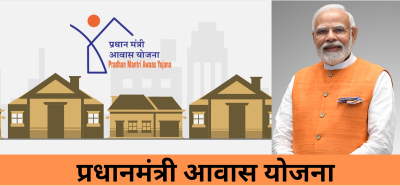Context-
The Pradhan Mantri Awas Yojana (PMAY) was launched in 2015 as a flagship program aimed at achieving "Housing for All" by 2022, covering both urban and rural areas. Under this scheme, the government envisioned the rehabilitation of slum dwellers with private sector participation, promotion of affordable housing for weaker sections through Credit Linked Subsidy Schemes (CLSS), partnership-based affordable housing with public and private sectors, and subsidy for Beneficiary-led Construction (BLC).
Objectives of the PMAY Scheme
The PMAY scheme was initiated with ambitious objectives to address the housing shortage and provide affordable housing options across India, particularly in urban areas where the demand is acute. However, despite substantial budgetary allocations and efforts, the scheme has faced challenges in meeting its targets.
According to government estimates, the urban housing shortage is significant, with around 3 million houses needed in urban centers. However, the actual shortfall might be much higher, as evidenced by reports indicating a 54% increase in urban housing shortage from 2012 to 2018. The PMAY-Urban (PMAY-U) component, specifically designed to address urban housing needs, has fallen short of expectations. As of April 2023, the urban shortfall was estimated to be over 60 lakh houses, highlighting the persistent gap between demand and supply.
In-Situ Slum Redevelopment Vertical: Performance and Challenges
The in-situ slum redevelopment (ISSR) vertical, which aimed to tackle the urgent need for slum rehabilitation, has not performed as expected under the PMAY-U. Only 2,10,552 houses have been sanctioned for eligible beneficiaries under ISSR, significantly below the anticipated targets. This indicates a failure to address the pressing need for slum redevelopment, despite its critical importance in urban housing.
One of the key challenges faced by ISSR projects is the model of vertical growth implemented by some private developers, leading to issues such as increased utility costs and cramped living spaces. This has dissuaded residents from occupying these new houses, thereby undermining the effectiveness of the redevelopment efforts. Additionally, the availability of suitable land for ISSR has been a major constraint, with certain types of land (e.g., under airports, railways, forests) being ineligible for redevelopment, further complicating the implementation of ISSR projects.
Moreover, the absence of community participation in planning and decision-making for ISSR projects has been noted as a critical shortcoming, leading to mismatches between project designs and community needs. This lack of community involvement has likely contributed to the suboptimal outcomes observed in ISSR projects.
Private Sector Participation in Social Housing
The PMAY scheme heavily relied on private sector participation to bridge the gap in social housing investments. However, the success of this approach has been mixed, with various challenges hindering effective collaboration between the government and private developers.
While the involvement of the private sector was envisioned as a means to leverage additional resources and expertise, certain projects have encountered issues related to the design and affordability of housing units. The vertical growth model adopted by some developers has resulted in higher recurring costs for residents, making these units financially burdensome for beneficiaries.
Additionally, the reliance on market forces to drive social housing initiatives has posed challenges, particularly in addressing the needs of vulnerable populations such as slum dwellers. The dichotomy between city master plans and the PMAY-U objectives has further complicated private sector involvement, as city plans often prioritize capital-intensive solutions over social housing.
Financial Contributions and Budgetary Allocation
The PMAY scheme involves financial contributions from both the central and state governments, as well as beneficiary households. However, the allocation of funds and the distribution of financial responsibilities raise important questions about the scheme's sustainability and impact.
The central government's contribution to the overall investment expenditure under PMAY is relatively modest, accounting for approximately 25% (₹2.03 lakh crore) of the total expenditure. In contrast, beneficiary households bear a significant financial burden, accounting for 60% (₹4.95 lakh crore) of the total expenditure. State governments, in conjunction with Urban Local Bodies, contribute ₹1.33 lakh crore to the scheme.
This financing structure raises concerns about equity and access, particularly for marginalized communities and landless households who may struggle to meet the financial requirements for housing under the PMAY scheme. Additionally, the limited government involvement in land acquisition and housing provision under certain verticals (e.g., BLC) underscores the challenges faced by vulnerable populations in accessing affordable and suitable housing options.
Conclusion
In summary, the Pradhan Mantri Awas Yojana (PMAY) scheme, particularly its urban component (PMAY-U), has faced significant challenges in achieving its objectives of providing "Housing for All" by 2022. The performance of critical verticals such as in-situ slum redevelopment (ISSR) has been below expectations, reflecting systemic issues related to planning, financing, and implementation.
While the scheme has sought to leverage private sector participation to augment social housing initiatives, the outcomes have been mixed, with issues such as design suitability and affordability affecting project effectiveness. Furthermore, the financing structure of PMAY raises important questions about equity and accessibility, highlighting the need for a more inclusive approach to housing policy and implementation.
Moving forward, addressing the shortcomings of PMAY will require comprehensive reforms that prioritize community engagement, equitable financing mechanisms, and adaptive urban planning strategies. By learning from the challenges encountered thus far, policymakers can better shape future housing initiatives to meet the diverse needs of India's urban population and ensure inclusive and sustainable urban development.
|
Probable Questions for UPSC Mains Exam- 1. Evaluate the Performance and Challenges of the In-Situ Slum Redevelopment (ISSR) Vertical under the Pradhan Mantri Awas Yojana (PMAY-U). What are the key factors contributing to the suboptimal outcomes of ISSR projects? Discuss with examples and suggest reforms to improve slum rehabilitation efforts under PMAY-U.(10 Marks, 150 Words) 2. Assess the Role of Private Sector Participation in Social Housing Initiatives under the Pradhan Mantri Awas Yojana (PMAY). Highlight the successes and challenges encountered in leveraging private sector resources for affordable housing. How can the government foster effective collaboration with private developers to address urban housing needs, especially for vulnerable populations like slum dwellers? .(15 Marks, 250 Words) |
Source- The Hindu







